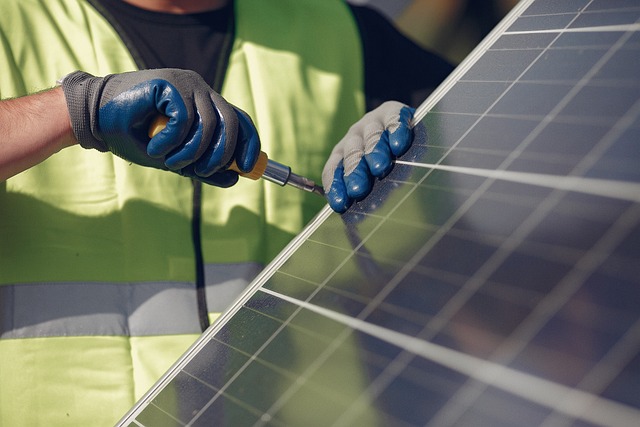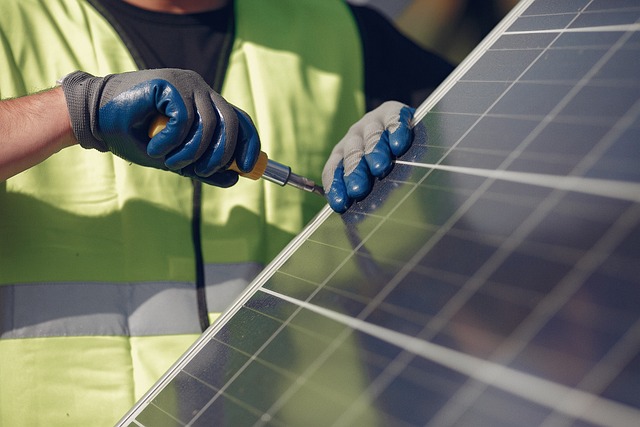Curious about what net metering is and how it can benefit you? Look no further! In our upcoming article, we’ll delve into the details of net metering and explain how it works in the world of solar energy. Whether you’re considering installing solar panels or simply want to understand how this innovative concept operates, we’ve got you covered. Stay tuned to learn all about net metering and its impact on your energy consumption and savings.

This image is property of pixabay.com.
Definition of Net Metering
Net metering is a billing arrangement that allows consumers who generate their own electricity from renewable energy sources, such as solar or wind, to receive credit for any excess energy they produce and send back to the grid. In simple terms, it is a way for homeowners, businesses, and other energy consumers to offset their electricity bills by utilizing their own renewable energy generation.
Net Metering Explained
Net metering operates on the principle of a two-way metering system. When a consumer’s renewable energy system, such as solar panels, produces more electricity than is being used on-site, the excess energy is automatically fed back into the grid. The utility company then credits the consumer for the excess energy produced, essentially spinning the meter backwards.
During times when the renewable energy system does not generate enough electricity to meet the consumer’s demand, such as at night or during cloudy days, the consumer’s electricity needs are supplemented by the grid. This allows for a seamless transition between self-generation and grid power, ensuring a reliable and consistent energy supply.
How Net Metering Works
To understand how net metering works in practice, let’s consider an example:
- You install a solar panel system on your roof that has a capacity of 5 kilowatts (kW).
- During the day, when your solar panels are generating more electricity than you are using, the excess energy is automatically fed back into the grid.
- The utility company records the amount of excess energy you produce, measured in kilowatt-hours (kWh).
- At night or during periods of high electricity demand, when your solar panels are not generating enough electricity, you consume energy from the grid.
- The utility company credits you for the excess energy you produced and fed back into the grid, effectively reducing your electricity bill.
The net metering process ensures that you only pay for the net energy consumed from the grid. If you produce more energy than you consume over a billing period, it can be carried forward as a credit to offset future energy bills. This allows you to maximize the financial benefits of your renewable energy system.
Benefits of Net Metering
Net metering offers numerous benefits for both consumers and utilities, making it a win-win solution for all stakeholders involved.
Advantages of Net Metering for Consumers
-
Cost Savings: By generating your own electricity and receiving credits for excess energy, net metering allows you to significantly reduce your electricity bills. Over time, these savings can add up and contribute to long-term financial stability.
-
Return on Investment: The installation of a renewable energy system is an investment that can yield returns over its lifespan. Through net metering, you can potentially recoup your initial investment and even generate revenue through excess energy credits.
-
Energy Independence: By generating your own electricity, you become less reliant on the grid and volatile energy markets. This can provide a sense of security and self-sufficiency, especially during times of power outages or utility disruptions.
-
Environmental Impact: Net metering encourages the use of renewable energy sources, such as solar and wind, which are cleaner and more sustainable than traditional fossil fuel-based electricity generation. By reducing your reliance on grid power, you contribute to the overall reduction of greenhouse gas emissions and environmental degradation.
Advantages of Net Metering for Utilities
-
Distributed Generation: Net metering facilitates the growth of distributed generation, where energy is generated at the point of consumption. This reduces the strain on the utility grid and transmission infrastructure, leading to a more efficient and reliable grid system.
-
Load Management: By incentivizing consumers to generate their own electricity, net metering helps utilities manage peak demand more effectively. Excess energy produced by consumers during high-demand periods can be utilized to meet the needs of other consumers, reducing the need for additional generation capacity.
-
Renewable Energy Integration: Net metering acts as a catalyst for the integration of renewable energy into the overall energy mix. As more consumers adopt renewable energy systems, utilities can incorporate these distributed energy resources into their long-term energy planning, promoting a cleaner and more sustainable energy future.
Net Metering Policies and Regulations
Net metering policies and regulations vary from country to country and even within different regions of the same country. The specifics typically include rules regarding system size limits, excess energy credits, eligibility criteria, and technical requirements for interconnection with the grid.
It is important to familiarize yourself with the net metering policies and regulations in your area before installing a renewable energy system. Consult with local authorities, utility companies, or reputable solar installers to ensure compliance with all applicable guidelines.
Net Metering vs Feed-in Tariffs
While net metering and feed-in tariffs (FiTs) are both mechanisms to incentivize renewable energy generation, there are distinct differences between the two.
Net metering focuses on self-consumption and allows consumers to offset their electricity bills through excess energy credits. The excess energy is fed back into the grid, and consumers receive financial compensation in the form of energy credits.
In contrast, feed-in tariffs provide a fixed payment for every kilowatt-hour of renewable energy generated, regardless of whether it is consumed on-site or fed back into the grid. FiTs typically offer long-term contracts and guarantee a specific rate for the energy generated, providing more certainty for renewable energy system owners.
Net Metering vs Net Billing
Net billing is often confused with net metering, but they are not the same. While net metering is a two-way metering system that credits consumers for excess electricity fed back into the grid, net billing is a one-way metering system that only credits consumers for the excess electricity produced.
Under net billing, any excess energy production is credited at a lower rate or sold to the utility company at a wholesale price. This means that consumers receive less financial benefit for their excess energy compared to net metering, where energy credits can offset the full retail rate of electricity.
Conclusion
Net metering is an essential component of the transition towards renewable energy adoption. By enabling consumers to generate their own electricity and receive credits for surplus energy, net metering incentivizes the use of solar, wind, and other renewable energy systems.
The benefits of net metering are vast, ranging from cost savings and return on investment for consumers to improved grid efficiency and the integration of renewable energy for utilities. However, it is important to be familiar with the specific net metering policies and regulations in your area before embarking on a solar or renewable energy project.
At HomeSolarDIY, we are committed to guiding and empowering you through your solar journey, providing the information and resources you need to make informed decisions. Together, we can unlock the potential of renewable energy and create a cleaner, more sustainable future for all.


